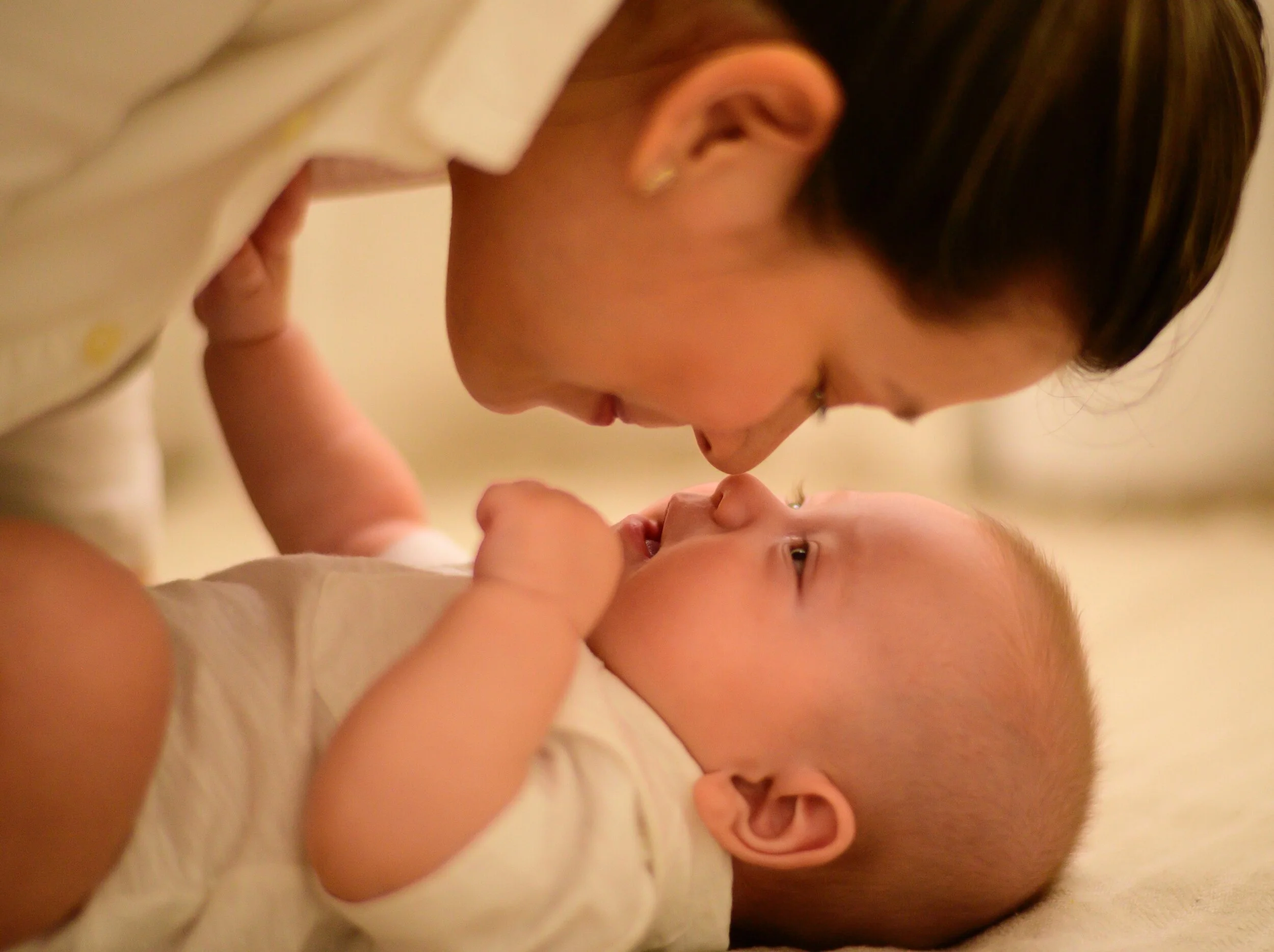4 baby mindfulness activities to promote balance and connection
Parent-child mindfulness
Providing our children with a daily dose of mindful connection time can make all the difference in the world. When we offer our full presence and give our children our mindful attention, their security buckets and sense of worthiness flourish.
Mindful parenting reduces stress and deepens bonds
In daily life as modern parents, most of us have way too much to do, relentless distractions, crazy agendas, and far too many heavy topics on our minds. Our children sense when we aren't fully present with them. They sense when our minds are elsewhere. They absorb our stress. As we project ahead to what should get done or ruminate on past challenges and disappointments, this can undermine their security.
Fortunately, mindful connection time is an antidote to the over taxed minds of the modern parent. Giving our child our full presence, whenever we can, mitigates the stress our children feel as a result of the multi-taking nature.
We're talking about Q U A L I T Y, not quantity. It wouldn't be healthy to give your child 100% attention, 100% of the time. You'd have a baby narcissist on your hands. But......most of us could do a lot better.
Introduce parent-baby mindfulness with these simple exercises
But what are some specific activities you can try to bring a more mindfulness and deeper connections into day-to-day life with your baby? Here are a few of my favorite mindfulness activities because they require no props, no gadgets, and no craftiness skills. Just you and your baby are required. All of these activities can be adapted and continued as your baby turns into a tot, toddler, little kid and beyond.
1. Sustained eye contact (e.g. eye or soul gazing)
When you gaze deeply into your child’s eyes, it tells them that they are safe and secure. You can communicate your love, your admiration, and deepen your child’s sense of worthiness by simply making and maintaining eye contact. Also, it’s hard to not be mindful when you’re maintaining eye contact with someone you love. Just try and see!
When you’re looking deeply into another’s eyes so that you’re able to see your own reflection, you are sharing your deepest selves and fostering a deep bond. Here are a few arrangements for making eye gazing work with your baby:
Eye gazing from your lap: Hold your baby in your arms, take a few long, slow breaths, and begin to focus your attention on your little one’s eyes. Notice what it feels like to be in each other’s presence - just being, and not doing anything other than looking into your baby’s eyes. Maintain eye contact as long as your baby desires (note: they may tire quickly and avert their gaze, ending the session when they are ready!). If they have the core and neck strength to sit on your lap, facing you, you could try that as well. Your baby may lunge, reach, or pull up closer to your face and eyes and that is part of the fun!
Eye gazing tummy time: Practice tummy time with your baby by lying on your stomach, pushing your chest and head up with your forearms (think sphinx pose), so that you are face-to-face with your little one. You can even rest your chin on your hands if your baby is still a newborn - or try propping your baby up with a rolled towel under their chest to give them some lift and a higher vantage point. Helping them feel secure and connected during tummy time also offer the benefit of keeping them happier, longer, during this strenuous activity! So it’s a win-win.
Eye gazing airplane: Lay on your back and bring your baby onto your tummy, with their head facing your head/chin. Then bend your knees in toward your chest and lift your baby up and place them on your shins. Keep your hands around their waist to keep them secure. Let your baby peer down on you. They may be a little hesitant at first, but once they get used to this, babies LOVE seeing parents from this elevated view and different perspective. Find and maintain eye contact as long as everyone is having fun. This is also a great exercise for infants because they use their stabilizer muscles to hold steady and will definitely lift their head and neck to get a better view. Your baby will probably kick their feet and want to turn this into a game - feel free bounce them and play baby airplane too! This 100% counts as tummy time + mindfulness!
Or simply lay down together in a side lying position or with your baby on your chest, so that you are face-to-face, and find each other’s gaze.
“When you love someone, the best thing you can offer is your presence. How can you love if you are not there?”
2. Mindful bathing (aka mindful splashing or bath time yoga 🐤)
Bathing offers a multi-sensory experience for baby and caregiver alike, making it an ideal time to practice mindfulness. Your baby is already practicing mindfulness in the bath - babies and little kids are naturals at living in the present - so feel free to follow their lead and immerse yourself in the bubbly and splashy moment. To help, tune into your senses rather than your thoughts. Notice what you see, feel, hear, and smell. Share this sensory exploration with your baby, explaining to them what you are experiencing. “I feel the warm water. I hear the rubber ducky squeaking. I smell the lavender bubbles. I see a splashing baby!” See how long you can stay in the moment with your baby. If your mind wonders, which it likely will, just notice that it’s wandered and let the thought float away like a bubble. Then bring your attention back to the sensory experience of bathing (or even bathing with) your sweet baby.
3. Mindful feeding or holding
When we’re feeding our babies, the lure of the smartphone can be hard to deny. I recommend unplugging for this short period of time, and focusing on your baby, your breath, and/or the sensations you are feeling in the moment.
4. Deepen your bond with mindful snuggling
Snuggling doesn’t just feel good - it triggers the release of oxytocin “the love hormone,” which is a natural stress reducer, making mindful snuggling an easy and healthy addition to your family’s daily routine. You can treat snuggling as a sensory experience, similar to bathing, by noticing the feeling of your baby’s soft skin or fuzzy head, the sweet baby smell, the temperature of their warm little body and the air that surrounds you, what you see in their eyes or around you.
Expect your mind to wander during mindful activities
Remember, during any of these activities, if your mind wanders to your to-do list, wondering if you’re out of milk or diapers, your meeting tomorrow, will the pandemic ever end, etc., know that it's totally normal. Most of us aren't accustomed to just existing with our children. Simply notice that your mind has wandered, and then gently nudge your attention back to your baby and the experience that you two are having in this present moment.
Include mindfulness in your parenting toolbox
Sprinkling moments of mindfulness and undivided attention into your daily routines will foster deep connection and feelings of security in your child, and will bring more fulfillment to the monotony that can be life as a parent -- not to mention strengthening the bond between you and your sweet baby.
Any moment with your child, challenging or delightful, can be mindful if you’re willing to give your full attention.







